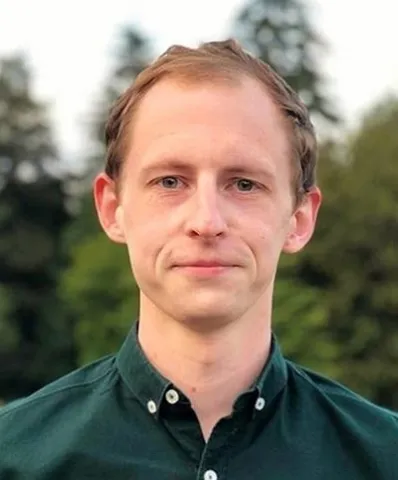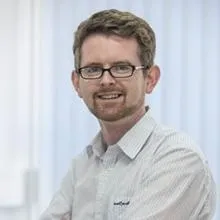About the project
The magnitude of future warming will depend upon the strength of carbon cycle feedback mechanisms. However, there are carbon cycle feedbacks that we still know little about. This PhD project will test whether CO2 release from sedimentary rocks is a missing carbon cycle feedback in past and future warm climates.
Over the last 150 years, anthropogenic activities have released vast quantities of carbon dioxide (CO2) into the atmosphere, resulting in higher global temperatures. The precise magnitude of future warming is dependent upon carbon cycle feedbacks, which can either amplify or mitigate warming. The latest generation of future climate models include several key carbon cycle feedback mechanisms. However, there are carbon cycle feedbacks that we know very little about and have the potential to take future climate in unimagined directions.
The geological record captures the response of the Earth system to all the feedbacks in operation, including those that we are unaware of. Recent work suggests that exposure of rock organic carbon to oxidative weathering at the Earth’s surface may have been an important carbon cycle feedback that plays a key role in controlling atmospheric CO2 over geological timescales. However, our knowledge of rock organic carbon oxidation in past warm climates is unknown.
This PhD project will use a novel data-modelling approach (ref. 2-3) to test whether rock organic carbon oxidation was responsible for modulating atmospheric CO2 change during major climate transitions during the Cenozoic and Mesozoic, including the Paleocene Eocene thermal maximum (56 million years ago) and the mid-Miocene Climatic Optimum (~15 million years ago). The results will help evaluate whether state-of-the-art Earth system models currently underestimate the climate response to CO2-driven warming in past warm climates.
This multi-disciplinary project will combine state-of-the-art organic geochemistry and Earth system modelling to study rock organic carbon oxidation in past environments. As organic geochemistry is the primary focus of this project, Dr Inglis will contribute significantly to training and supervision. Dr Inglis (organic geochemistry, biogeochemistry, paleoclimatology) is currently leading a Royal Society grant to explore the role of terrestrial organic carbon burial during past warm events. Dr Richard Stockey (Earth system modeller) provides expertise in using cGENIE (an Earth system model of intermediate complexity) to reconstruct long-term changes in the carbon cycle.
Professor Ben Mills (University of Leeds) is an expert in long-term carbon cycle modeling and developed a novel modelling framework (SCION) that combine physical (PlaSim) and biogeochemical (COPSE) models. Professor Tom Gernon (Earth surface processes) is an expert in using data and numerical approaches to study the long-term carbon cycle and climate. All supervisors will contribute to data interpretation. Supervision will involve regular meetings with the entire supervisory team (every week initially but moving to monthly and as needed as the PhD develops).
All doctoral candidates will enrol in the Graduate School of NOCS (GSNOCS), where they will receive specialist training in oral and written presentation skills, have the opportunity to participate in teaching activities, and have access to a full range of research and generic training opportunities. GSNOCS attracts students from all over the world and from all science and engineering backgrounds. There are currently around 170 full and part-time PhD students enrolled (~60% UK and 40% EU & overseas). Specific training will include:
• extraction and isolation of organic compounds from sedimentary rocks
• training in gas chromatography-mass spectrometry, GC-isotope ratio-mass spectrometry and liquid chromatography-mass spectrometry
• experience in running and analysing cGENIE model simulations
• improved proficiency in programming languages (e.g., R/python/bash)
• scientific communication through multiple media and at various local, national and international conferences/meetings.
These skills will address practical, numerical, statistical and laboratory skills, equipping the student for a career across a range of professions, inside or outside of academia.
References
[1] Hilton, R.G. and West, A.J., 2020. Mountains, erosion and the carbon cycle. Nature Reviews Earth & Environment, 1(6), pp.284-299.
[2] Hollingsworth, E.H., Elling, F.J., Badger, M.P.S., Pancost, R.D., Dickson, A.J., Rees‐Owen, R.L., Papadomanolaki, N.M., Pearson, A., Sluijs, A., Freeman, K.H. and Baczynski, A.A., 2024. Spatial and Temporal Patterns in Petrogenic Organic Carbon Mobilization During the Paleocene‐Eocene Thermal Maximum. Paleoceanography and Paleoclimatology, 39(2), p.e2023PA004773.
[3] Mills, B.J., Donnadieu, Y. and Goddéris, Y., 2021. Spatial continuous integration of Phanerozoic global biogeochemistry and climate. Gondwana Research, 100, pp.73-86.


